For the system shown in Fig. the string is light and pulley is frictionless. The 4kg block is given an upward velocity of 1m/s. The centre of mass of the two blocks will [neglect the impulse duration]
![For the system shown in Fig. the string is light and pulley is frictionless. The 4 kg block is given an upward velocity of 1 m//s. The centre of mass of the two blocks will [neglect the impulse duration]](https://d10lpgp6xz60nq.cloudfront.net/physics_images/BMS_VOL2_C01_E01_181_Q01.png)
accelerate down with g/3
initially accelerate downwards with g and then after some time accelerate down with g/3.
initially accelerate with g and then the acceleration is 0
initially accelerate with g and then with accelerate with g/3.
The correct Answer is:D
Initially both the blocks are under the gravity effect so
aCM=4g+2g4+2=g
But once the jerk in the sting occurs and string becomes taut, the 4kg block moves down with acceleration g/3 and 2kg block moves up with acceleration g/3 so,
aCM=4×g3−2g36=g9
Topper's Solved these Questions
- BOOK - CENGAGE PHYSICSCHAPTER - CENTRE OF MASSEXERCISE - Multiple Correct25videos
CENTRE OF MASS
- BOOK - CENGAGE PHYSICSCHAPTER - CENTRE OF MASSEXERCISE - Assertion - Reasoning2videos
CENTRE OF MASS
- BOOK - CENGAGE PHYSICSCHAPTER - CENTRE OF MASSEXERCISE - Subjective23videos
CENTRE OF MASS
- BOOK - CENGAGE PHYSICSCHAPTER - CALORIMETRYEXERCISE - Solved Example13videos
CALORIMETRY
- BOOK - CENGAGE PHYSICSCHAPTER - DIMENSIONS & MEASUREMENTEXERCISE - Integer2videos
DIMENSIONS & MEASUREMENT
Similar Questions
In the arrangement shown in Figure, mA=2kg and mB=1kg. String is light and inextensible. Find the acceleration of centre of mass of both the blocks. Neglect friction everywhere.
 View Solution
View SolutionTwo blocks A and B of equal masses are attached to a string passing over a smooth pulley fixed to a wedge as shown in figure. Find the magnitude of acceleration of centre of mass of the two blocks when they are released from rest. Neglect friction.
 View Solution
View Solution
Knowledge Check
- Question 1 - Select One
In the system shown in fig the pulley is frictionless and the string massless if m1=m2 thrust on the pulley will be:
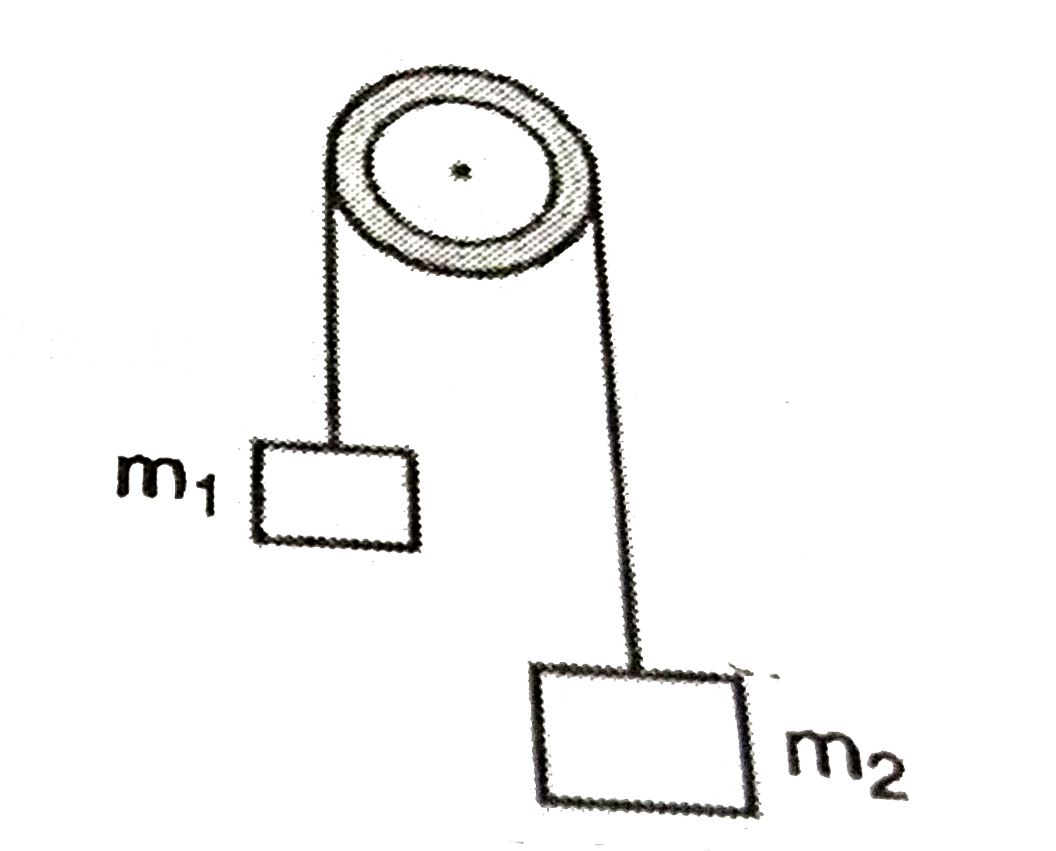 Aless than(m1+m2)gBgreater than(m1+m2)gCequal to (m1+m2)gDnone of the above
Aless than(m1+m2)gBgreater than(m1+m2)gCequal to (m1+m2)gDnone of the above - Question 2 - Select One
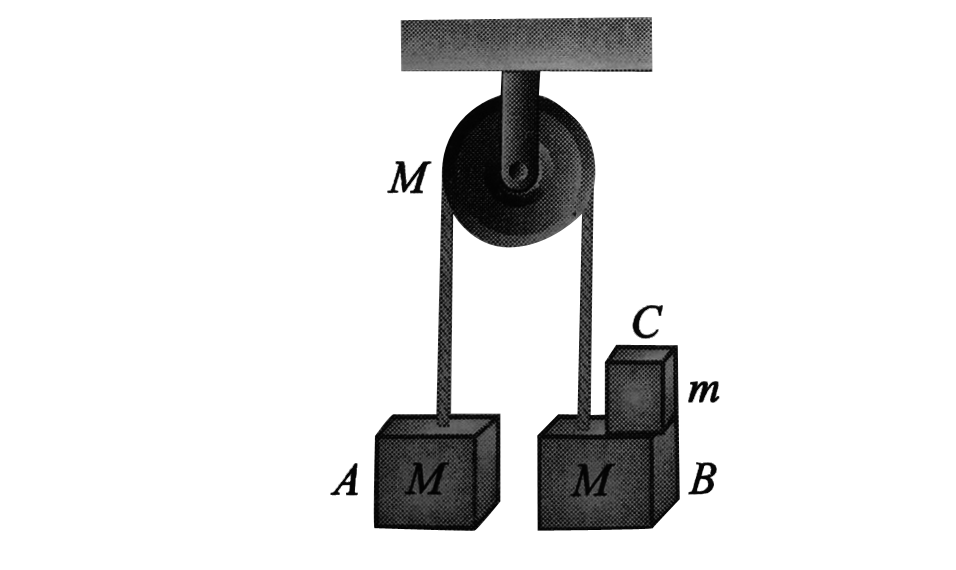
For the following system shown assume that pulley is frictionless, string is massless (m remains on M),
Q. The acceleration of the block A isAmg2M+mB2mg2M+mCmgM+2mDMgM+2m - Question 3 - Select One
Two blocks of masses 10 kg and 4 kg are connected by a spring of negligible mass and placed on a frictionless horizontal surface. An impulse gives a velocity of 14 m/s to the heavier block in the direction of the lighter block. The velocity of the centre of mass is -
A30 m/sB20 m/sC10 m/sD5 m/s
Two blocks of masses 10 kg and 4 kg are connected by a spring of negligible mass and placed on a frictionless horizontal surface. An impulse gives a velocity of 14m/s to the heavier block in the direction of the lighter block. The velocity of the centre of mass is
View SolutionIn the system shown all the surfaces are frictionless while pulley and string are massless. The mass of block A is 2m and that of block B is m. The acceleration of block B immediately after system is released from rest is
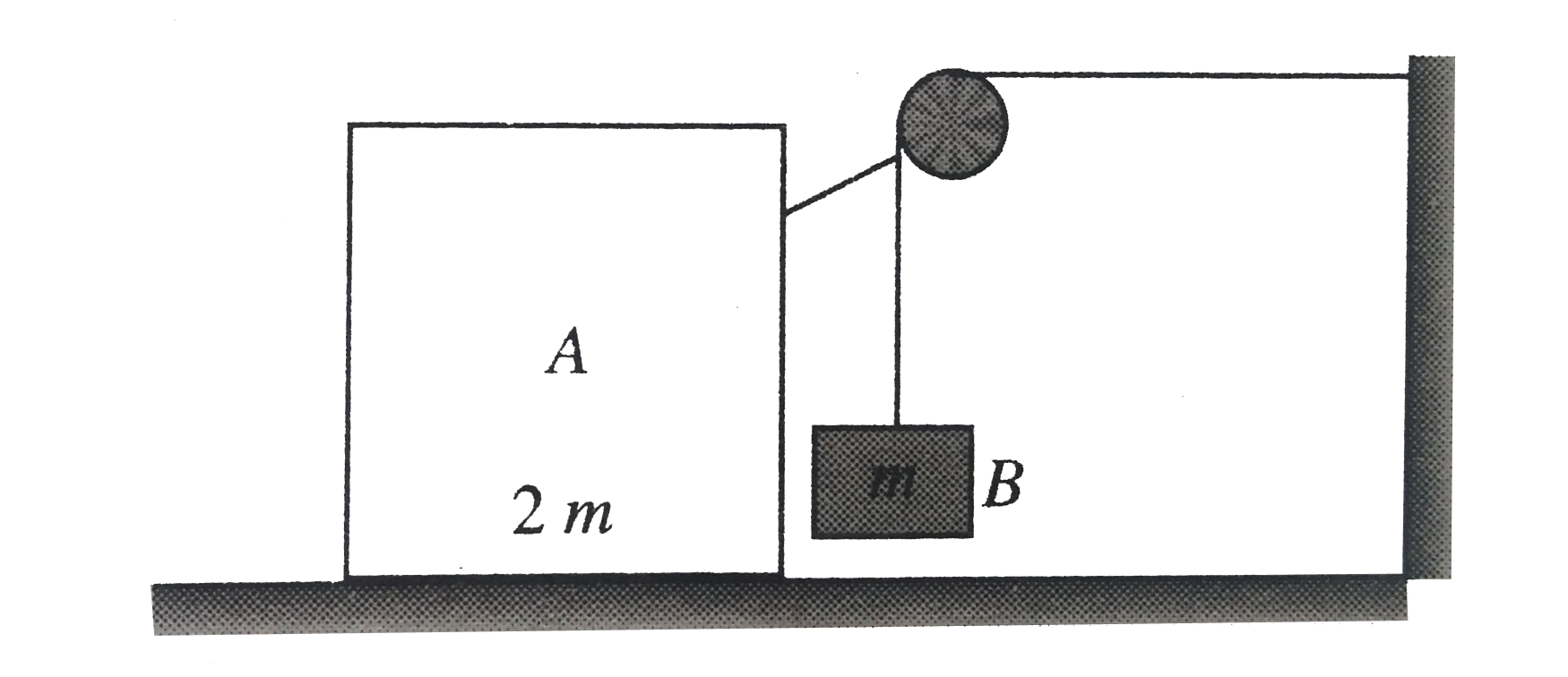 View Solution
View SolutionTwo block of masses 10 kg and 4 kg are connected by a spring of negligible mass and placed on a frictionless horizontal surface. An impluse given a velocity of 14 m/s to the heavier block in the direction of the leghter block. The velocity of centre of mass is :
View SolutionIn the shown mass pulley system, pulleys and string are massless. The one end of the string is pulled by the force F = mg. The acceleration of the block will be :
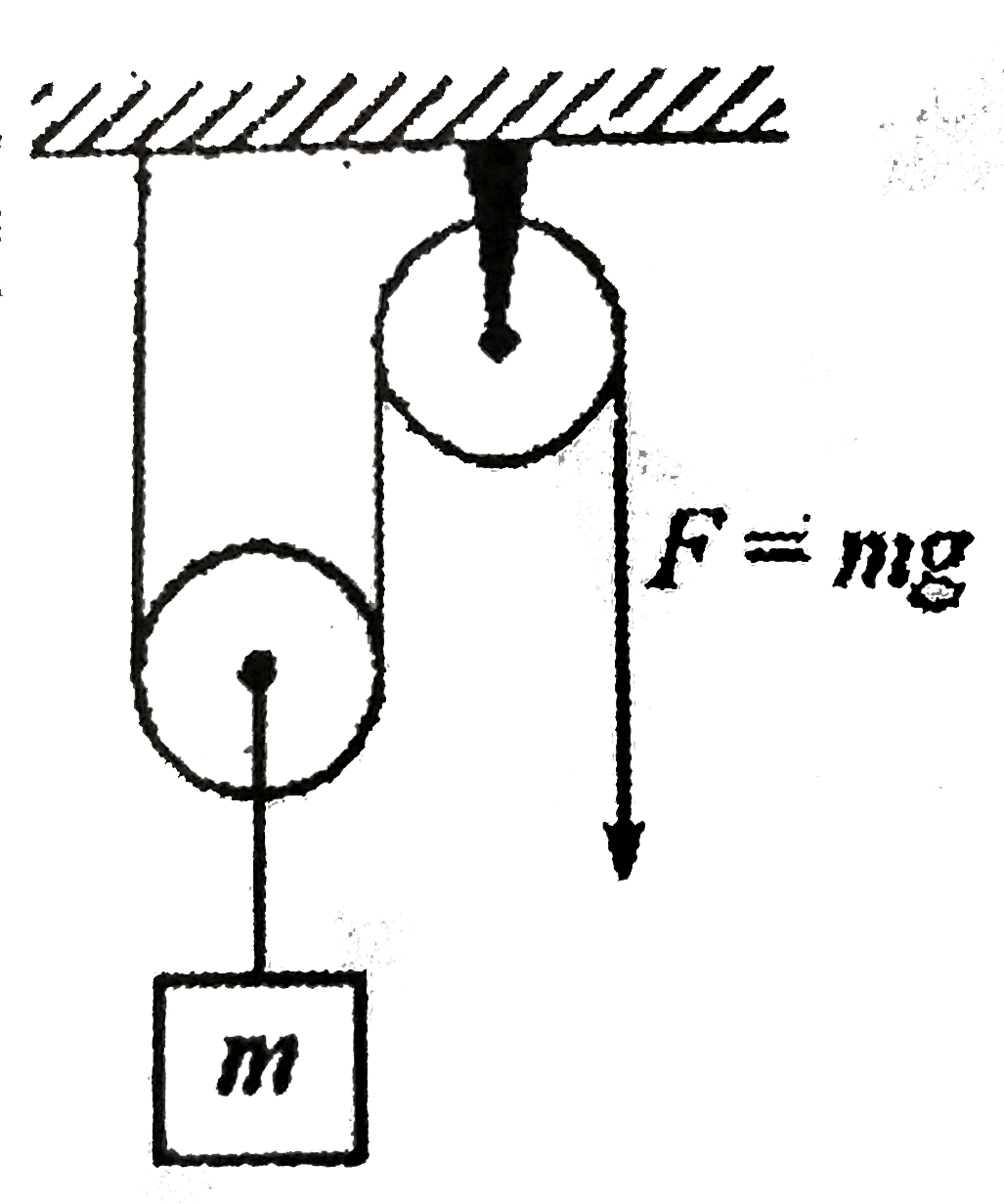 View Solution
View SolutionA system of two blocks A and B are connected by an inextensible massless string as shown in Fig. The pulley is massless and frictionless. Initially, the system is at rest. A bullet of mass m moving with a velocity u as shown hits block If and gets embedded into it. The impulse imparted by tension force to the block of mass 3m is
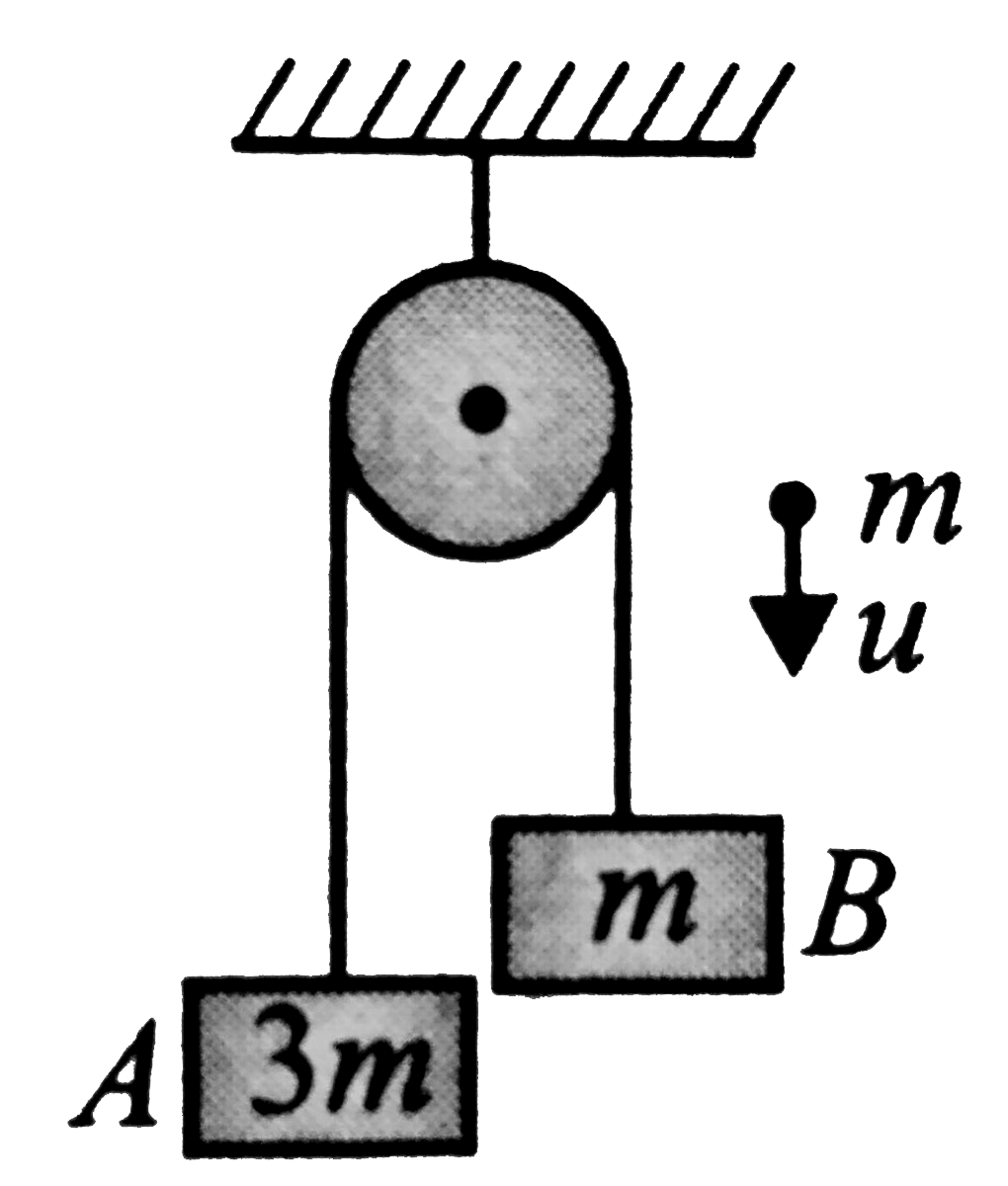 View Solution
View Solution

